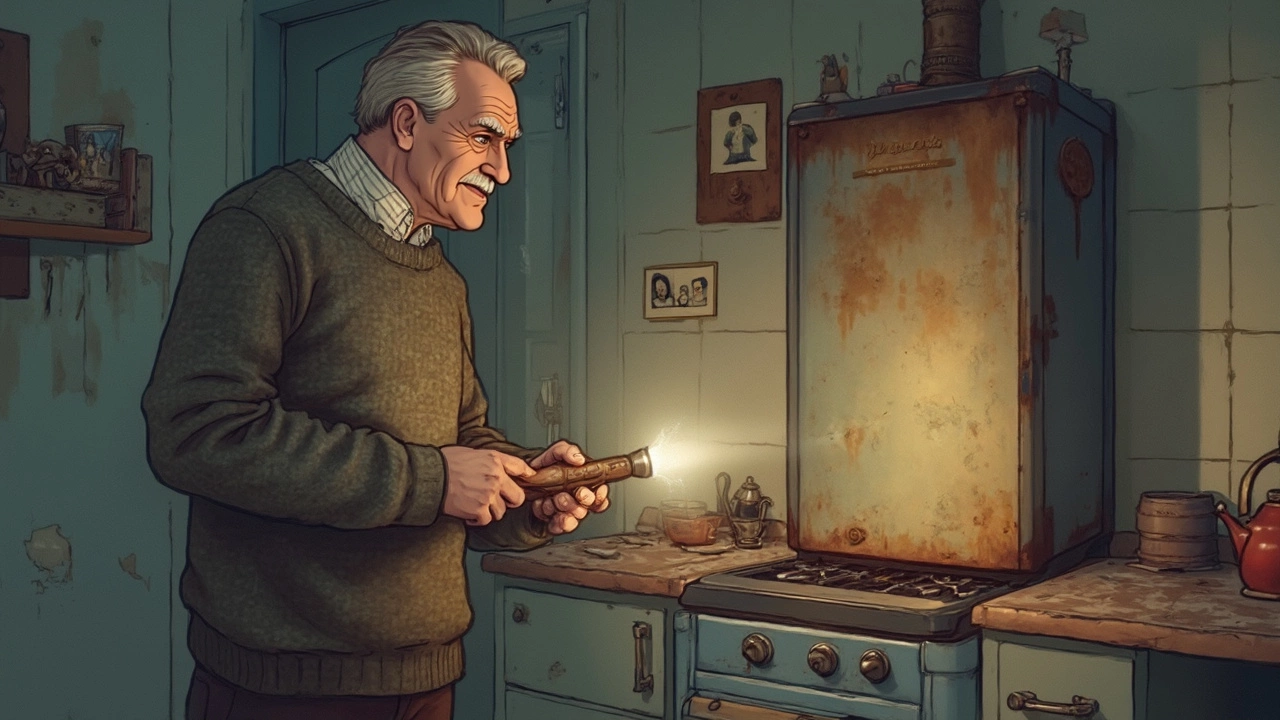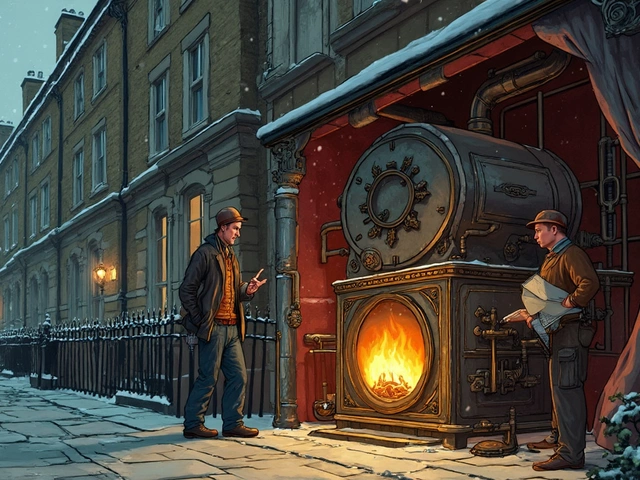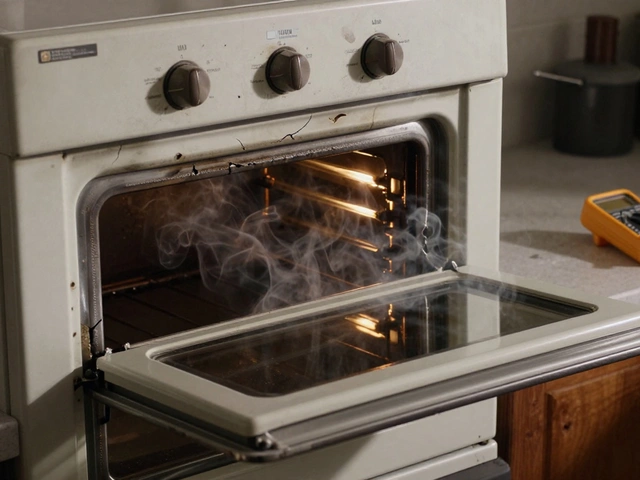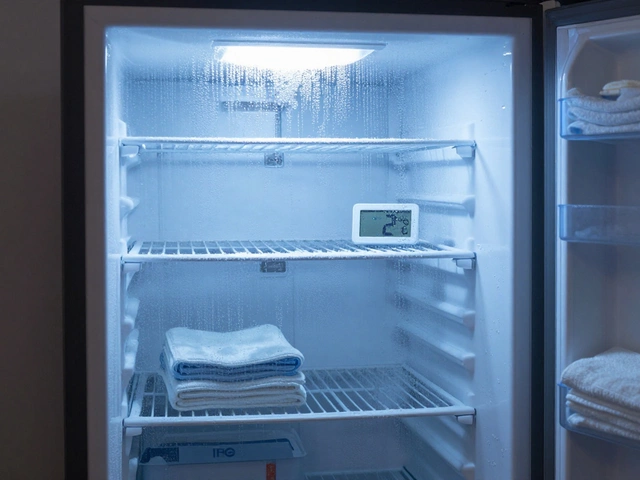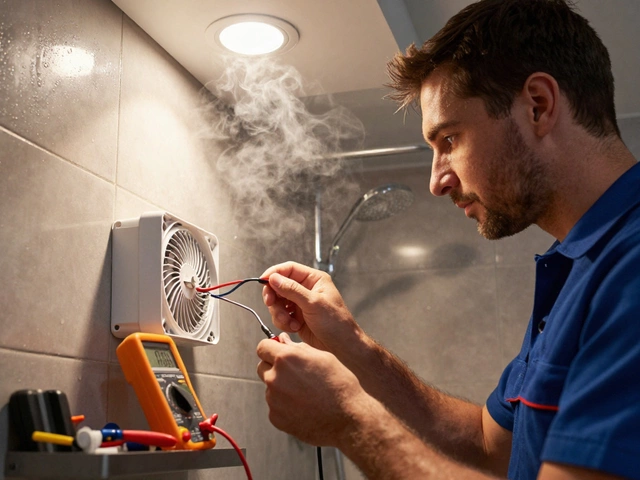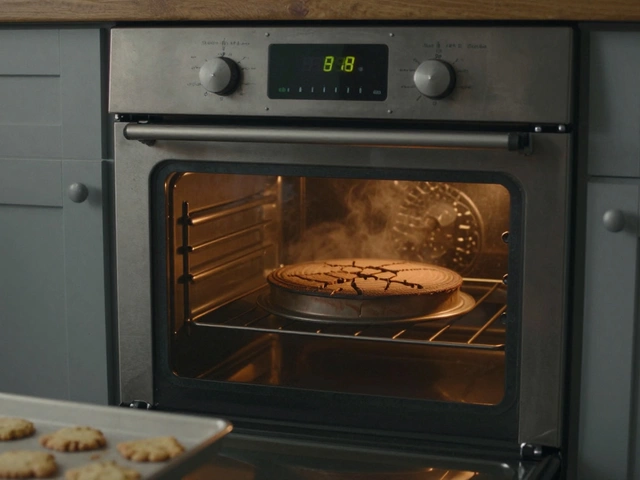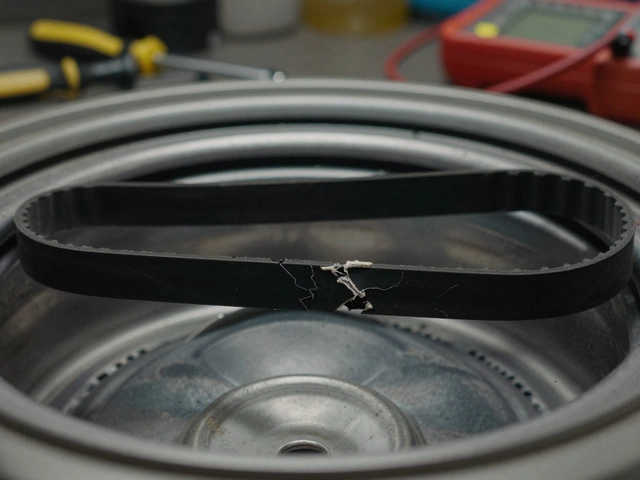Spotting a 40-year-old boiler in someone’s basement isn’t rare, but it sure can raise some eyebrows—especially if you care about safety and your heating bill. So, is running a boiler that’s four decades old a gamble, or can these old machines really keep going strong?
Let’s cut right to it. The biggest danger with an ancient boiler isn’t just the threat of it breaking down on a freezing morning. There’s the risk of carbon monoxide leaks if internal parts start to corrode or fail. Modern boilers have all kinds of safety features built in, while old-timers mostly rely on regular checkups and a lot of luck.
If you’re hanging on to an old boiler, it’s usually because it’s still making hot water—or maybe repairs seem cheaper than replacement. But skipping regular lessons from a qualified engineer is a risky shortcut. Corroded pipes, pilot lights that won’t stay on, and tired old controls can all turn a worn-out boiler from a money-pit into a real hazard.
- The Real Risks of an Old Boiler
- How Long Should a Boiler Last?
- Spotting Danger: Warning Signs Your Boiler Isn’t Safe
- Why People Keep Old Boilers Alive
- What to Do If Your Boiler’s Ancient
- When It’s Time to Let Go: Upgrading Safely
The Real Risks of an Old Boiler
A 40 year old boiler isn’t just “vintage”—it can be a real danger if things have started to fail on the inside. Old boilers were built tough, but after decades, parts break down, seals leak, and metal just doesn’t hold up against rust forever. That’s where the serious risks pop up.
The biggest worry is carbon monoxide (CO). This is the deadly, invisible gas you can’t smell or see. Boilers that don’t burn fuel completely can leak CO into your home. New models have special sensors and safety shut-offs, but most old boilers simply don’t.
Your odds of something going wrong go up with every year the boiler sticks around. Here’s a rundown of what can happen with these relics:
- Carbon monoxide leaks if the heat exchanger is cracked or rusted
- Gas leaks from worn valves or deteriorated joints
- Explosions or fires (rare, but not unheard of) due to faulty safety controls or blocked flues
- Leaks that cause water damage, mold, or structural headaches
- Mysterious loss of heat right when you need it most
Want to know the raw numbers? Take a look at this:
| Boiler Age | Breakdown Likelihood (per year) | CO Leak Incidents (average cases/year UK) |
|---|---|---|
| <10 years | 12% | Approx. 40 |
| 10-20 years | 24% | Approx. 90 |
| 20-40 years | 35%+ | Over 300 |
That’s a big jump. Most insurance companies won’t even touch a boiler past 25 years old for a reason. Many repair engineers have stories of finding old boilers with major dangers—think half-burned insulation, rust flakes falling out of the combustion chamber, or flue pipes that look more like Swiss cheese.
If you keep an old boiler running, you’re gambling on stuff that’s way out of sight. Safety checks help, but even the pros can’t always spot every hidden crack or failing part. That’s why it’s not just about comfort—safety with old boilers is a real, ongoing battle.
How Long Should a Boiler Last?
Most folks are surprised to hear that the usual life expectancy of a boiler is way less than 40 years. On average, you’re looking at about 10-15 years for modern boilers, and maybe 20-25 years if you’ve got a robust old model with regular maintenance. So, when you hear about a system chugging away after four decades, it’s seriously past its best-before date.
The big difference between older and newer boilers is all about build quality and technology. Back in the day, parts were heavy and simple, built to last, but not as safe or efficient as what’s out today. Newer boilers give you higher efficiency and way better control over your home’s heating, but they don’t always match the “stubborn old mule” toughness of something built back in the 1980s.
Here’s a quick look at average boiler lifespans and replacement signals:
| Boiler Type | Average Lifespan | Warning Signs for Replacement |
|---|---|---|
| Modern Condensing | 10-15 years | Frequent breakdowns, loss of pressure, noisy operation, higher energy bills |
| Non-condensing (pre-2000s) | 15-25 years | Rust, unreliable pilot light, trouble finding parts, yellow burner flame |
| 40+ Year Old Boiler | Already exceeded design life | Visible corrosion, strange smells, constant repairs, no safety features |
It’s common for some old boilers to keep limping along because they're simple and overengineered. People hold onto them hoping to save money, but once you hit the 25-year mark, every extra year is a roll of the dice.
If you’re still running a 40 year old boiler, regular professional inspections are not just a good idea—they’re vital. And if your repair bills are stacking up? It’s usually smarter and safer to invest in a new system rather than pour cash into keeping a relic alive.
Spotting Danger: Warning Signs Your Boiler Isn’t Safe
A 40 year old boiler might still be working, but there are some clear red flags you shouldn’t ignore. Some warning signs show up loud and clear, while others sneak up until something goes badly wrong. If you keep an eye out, you can spot trouble before it gets dangerous—or expensive.
Here’s what to watch for:
- Strange smells: If you notice a musty or burning smell, or anything weird coming from the boiler, hit pause. Gas boilers shouldn’t have any odor. Old oil boilers can smell oily if they leak, but a gassy or burning odor could mean serious trouble (like a carbon monoxide leak).
- Yellow or flickering pilot light: A healthy flame is steady and blue. If the pilot is yellow, orange, or keeps going out, you could be dealing with venting issues or carbon monoxide problems.
- Unusual noises: No boiler is truly silent, but banging, clanking, or whistling? Those sounds tend to mean mineral buildup, air in the system, or old parts that are about to fail.
- Leaks and rust: Water on the floor around your boiler, rust spots, or signs of corrosion on pipes and the tank are all bad news. Leaks mean parts are wearing out, and rust weakens your system even more.
- Cold spots or slow heating: If rooms never quite warm up or radiators are cold at the top, your boiler may be losing efficiency—or something more serious could be going on inside the system.
- Frequent resets or shut-downs: If you keep needing to restart your boiler, or notice it turning off for no good reason, that’s an obvious safety problem.
Safety isn’t just about your senses—there are measurable risks with an aging system. Here’s a quick look at some stats on old boiler failures compared to newer ones:
| Boiler Age | Average Failure Rate (per 1,000 units, yearly) | Carbon Monoxide Risk |
|---|---|---|
| 0-10 years | 5 | Low |
| 11-20 years | 19 | Medium |
| 21-40 years | 43 | High |
If you notice any of these warning signs, don’t just shrug them off. Regular checks can catch most problems before they turn into emergencies. If carbon monoxide is even a remote concern, get a detector and call in a pro—no excuses.
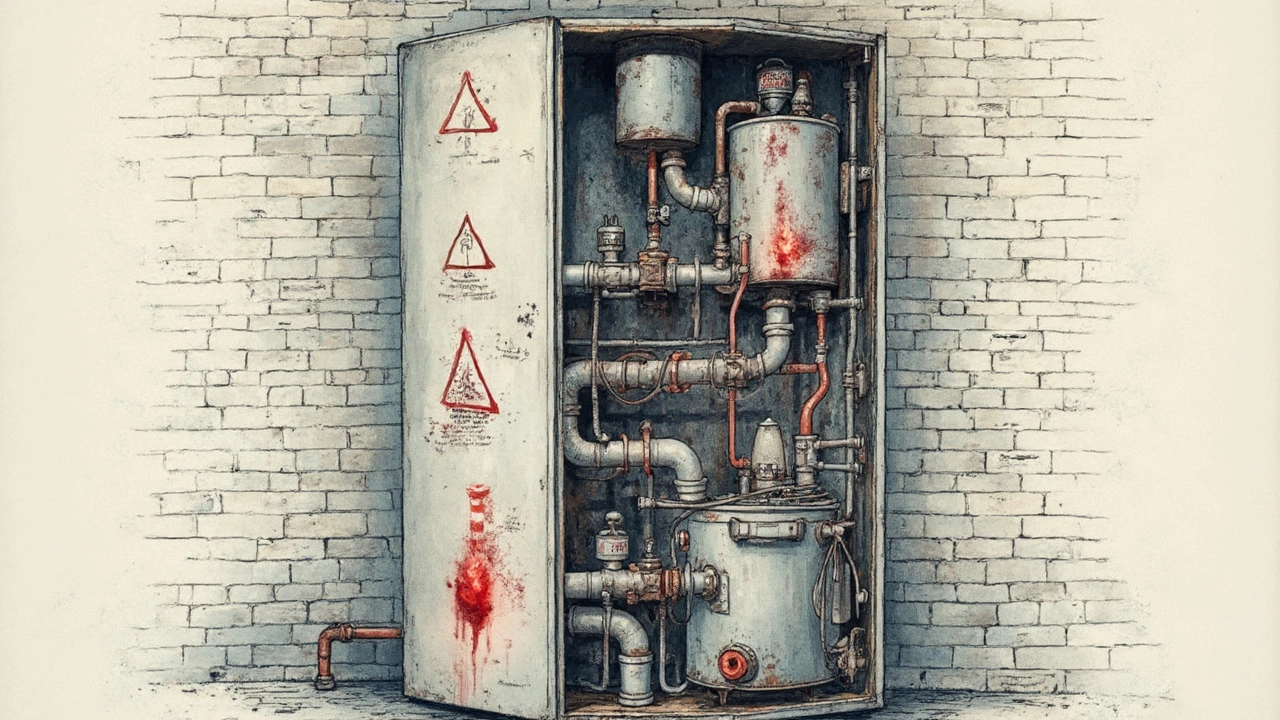
Why People Keep Old Boilers Alive
It seems wild that someone would keep a 40-year old boiler running, but it happens all the time. There are actually a few straightforward reasons behind this choice—some make sense, some not so much.
First up, cash. Replacing a boiler isn’t cheap. Swapping out an old system for a new one in the UK usually costs anywhere from £2,000 to £4,500, depending on your home and setup. For folks on tight budgets, simply patching up the old unit feels a lot easier on the wallet—at least short-term.
Another factor? "If it ain’t broke, don’t fix it" thinking. If you’ve had the same boiler chugging away for decades with only minor repairs now and then, it’s easy to believe it’ll keep going. Some of these old models were built like tanks, with thick metal parts that seem to survive anything.
There’s also a fair chunk of homes with sentimental value at play. People can get oddly attached to systems that have “just always been there.” Plus, many old boilers are standalone systems that work with unique piping layouts not found in newer homes. Upgrading might mean rewiring half your basement or tearing up the floor, which is no one’s idea of fun.
The next bit is distrust in modern stuff. It’s not unusual for folks to believe that new boilers come with extra things to go wrong—like circuit boards or electric controls. Old boilers are seen as simple, proven, and—at least in some people’s eyes—easy to fix with the right tools.
Take a look at some of the most common reasons why people keep their old boilers running, based on real survey data from 2024 ordinary homeowners:
| Reason | Percentage of Respondents |
|---|---|
| High replacement cost | 54% |
| Old boiler still works fine | 26% |
| No trust in new models | 11% |
| Home renovation hassle | 7% |
| Sentiment/nostalgia | 2% |
Still, this mindset comes with downsides you can’t ignore: lower efficiency, expensive emergency repairs, and bigger chances of a sudden breakdown. If you’re hanging on to a decades-old system, make sure you’re not skipping out on safety checks or annual servicing—otherwise, you might learn the hard way why most boilers don’t make it past their 20th birthday.
What to Do If Your Boiler’s Ancient
So you’ve got a boiler older than some smartphones’ entire product lines. Hanging onto a truly ancient unit isn’t rare, but you can’t ignore reality—these things wear out, and repairs only plug the holes for so long. Your first job? Don’t gamble with safety or your wallet. Here’s a straight-talking plan to keep your home warm and safe.
- Get a qualified engineer to inspect it yearly. Old models miss out on built-in safety checks. A pro can spot issues you just can’t see. In the UK, for example, a Gas Safe registered engineer is the gold standard.
- Install a carbon monoxide alarm if you haven’t already. It’s cheap and can save your life. Carbon monoxide leaks from old boilers kill over 60 people per year in the UK alone.
- Check your pilot light. If it keeps blowing out or burns yellow (instead of blue), shut the boiler off and call an expert right away.
- Listen for new noises. Grinding, banging, or whistling can mean failing parts or dangerous pressure build-ups.
- Be honest about repair bills. Fixing a 40 year old boiler often costs more long-term than just getting a new one, especially given modern efficiency standards. If repairs are frequent or expensive, it’s time for a rethink.
- Ask about efficiency. Modern boilers squeeze out up to 90% efficiency. Most 40-year-olds? You’re lucky to get 60%. That means higher energy bills month after month. Here’s a quick look:
| Boiler Age | Average Efficiency (%) | Estimated Annual Savings (if upgraded) |
|---|---|---|
| 0-10 Years | 90+ | £0 |
| 20 Years | 75 | £200-£300 |
| 40 Years | Below 60 | £500-£800 |
Before shelling out for another repair, do the math. Sometimes ‘one last fix’ leads to another and another. If you decide to upgrade, check for grants or energy company deals—lots of places offer help or low-interest finance when replacing seriously old boilers. The safer and smarter you are now, the warmer and richer you’ll be later.
When It’s Time to Let Go: Upgrading Safely
Hanging on to a 40 year old boiler feels thrifty, but there comes a point where upgrading just makes sense. First, parts for old boilers are getting rare—sometimes impossible to find. Even if you can still nab them, costs add up fast. Then, there’s insurance. Many home insurance policies quietly refuse to cover damage from heating systems this ancient, since the risks are too high.
Let’s be real about performance. Modern boilers are typically 90% efficient, while 40-year-old models might stagger along at 60%—that’s a huge pile of wasted cash every year just flying out the flue. Upgrading isn’t just about safety, it’s about saving money month after month.
If you feel anxious about making the leap, here’s a simple step-by-step approach that works:
- Get a certified heating engineer to inspect your current system. Don’t skip this—a pro can tell you if your boiler is hanging by a thread.
- Do some homework on new boiler models. Condensing boilers are now the standard in the UK, using less fuel and slashing your bills.
- Look for a model with a long warranty (7–10 years is common now). It shows the manufacturer stands behind their kit.
- Check for government grants or incentives. The Boiler Upgrade Scheme in England, for example, offers up to £7,500 toward heat pump systems in 2025.
- Ask your installer for an energy savings estimate. You might be shocked how quickly an upgrade pays for itself.
To put the numbers in perspective, check out how old vs. new boilers stack up:
| Boiler Age | Average Efficiency (%) | Expected Annual Fuel Cost* |
|---|---|---|
| 40 Years | 60 | £2,000 |
| 5 Years or Less | 90 | £1,350 |
*Based on a typical 3-bedroom UK home using gas heating, fuel prices as of 2025.
The payoff? Swapping that old boiler could knock £650 a year off your bills, plus you’ll get peace of mind every time the heating kicks on. Don’t forget—modern systems are quieter, smaller, and a lot better for the environment too. If your boiler’s been around longer than your VHS collection, it’s probably time for an upgrade.

